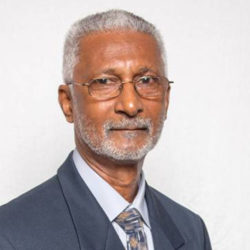Part II
By Louis Holder
Louis Holder is an entrepreneur in the manufacturing sector
[This is the second of a seven-part series on changes to labor employment in the future, causes of this upheaval, and some possible measures to mitigate their disruptive effects. Most of what is described in the foregoing is applicable to western developed countries but middle-income countries such as Guyana are in the crosshairs. The difference is timing. Further, Guyana does not possess the skills-set to prolong the onset of these changes. The country has received some service outsourcing jobs but these are low-skill positions. It is therefore shared with the public to help focus attention on the decision-making needed to avert the imminent calamity.
In the first-part, I described the nationalist fervour sweeping the western developed countries of America and Europe characterized by the emergence of Donald Trump and Brexit. Their workers are angry and fearful of the future and look for scapegoats in the form of immigrants.]

It intensified after the fall of European Communism by 1991, and now income inequality is at its highest level. The period of lowest inequality was 1950s to 1980s. So in the US, the top 1% earned 20% of the pre-tax income in 2013 as opposed to 10% during the period 1950 to 1980. The repercussions are significant for workers’ stagnation.
Since the Bolshevik Revolution in 1917 and because of it, western countries adapted a form of capitalism with a human face. This was referred to as the ‘mixed economy’. The mixed economy incorporated the freedoms of a market economy with heavy doses of government intervention in the areas of regulation (environmental, labour, consumer protections, anti-trust, intellectual property, incorporation, and tariffs/quotas) and transfer payments (welfare subsidies, food stamps, tax credits and medical insurance for the poor, social security for the aged, and progressive income tax systems). Government intervention was intentional and intended to stave off the movement in western countries towards communism and socialism which had taken hold in Eastern European and Asian countries. By 1935, the American government had passed the National Labor Relations Act which gave workers the right to organize into unions. This gave workers effective bargaining powers and thwarted the attractions of communism.
The mixed economy in western countries ended with the fall of communism in Eastern Europe in December 1991, and laissez-faire (also referred to as Social Darwinism) capitalism moved to the forefront. Ronald Reagan of USA and Margaret Thatcher of Britain started the dismantling of regulations and transfer payments under the mixed economy model. They and their cohorts reduced taxes and called for smaller government. They removed tariff barriers so the capitalists could claim a bigger market to sell their goods and services but more importantly to allow the outflow of capital to low-cost labour regions. There was no longer the fear of the attraction of communism, an effective counterforce against the unfairness of capitalism. Workers started falling out of the middle class and income inequalities expanded geometrically.
The problem with widening the income-inequality gap is that it reduces demand for goods and services in the marketplace. Since a greater portion of the pie is going to people whose needs are already being met, the additional income ends up in bank accounts or investment portfolios creating asset inflation. These ‘bubbles’ eventually burst with impacts to the investors but also the remaining 90%. These workers’ quality of life continued to stagnate and deteriorate resulting in their anger and the need to find scapegoats.
And this is the just calm before the storm.
In the third installment, I will touch on one of the major factors responsible for the stagnation experienced by workers worldwide, climate change.





